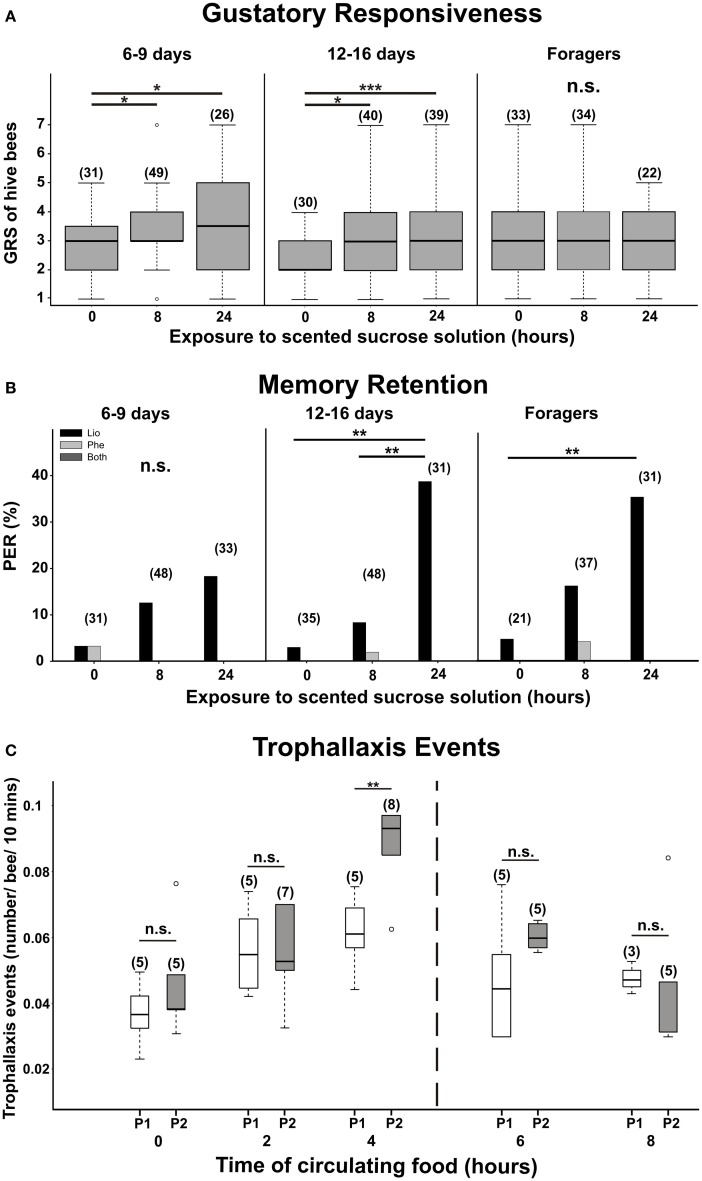Figure 1.
Gustatory responsiveness and memory retention of free-flying bees after the influx of scented sucrose solution. Bees of different age groups: 6/9 days old, 12/16 days old, and foragers were captured from the hive. Gustatory response scores (GRSs) (A) and proboscis extension responses (PER) (B) to the odor solution (LIO, black bars), a novel test odor (phenylacetaldehyde, PHE, gray bars), or both (dark gray bars) were measured during the incoming of unscented sucrose solution (15% w/w) (0 h) or after 8 h and 24 h of foraging on a scented sucrose solution (linalool, LIO, 15% w/w). In addition, number of trophallaxis events per bee during a 10min-observation period was counted from the experimental colony while foragers collected 15% w/w sucrose solution for 8 h (C). White boxes represent the reward program number 1 (P1) in which the colony collected unscented 15% w/w sucrose solution. Gray boxes represent the reward program number 2 (P2) in which bees fed for 4 h from a LIO-scented sucrose solution (15% w/w) and afterwards from an unscented solution of equal concentration. The asterisks indicate statistical differences (Panel A: *p < 0.05, ***p < 0.001, n.s., not significant; Dunn comparison after Kruskal–Wallis test; Panel B: **p < 0.01; G-test; Panel C: **p < 0.01; Mann–Whitney test. After Ramírez et al., 2010. With permission).

